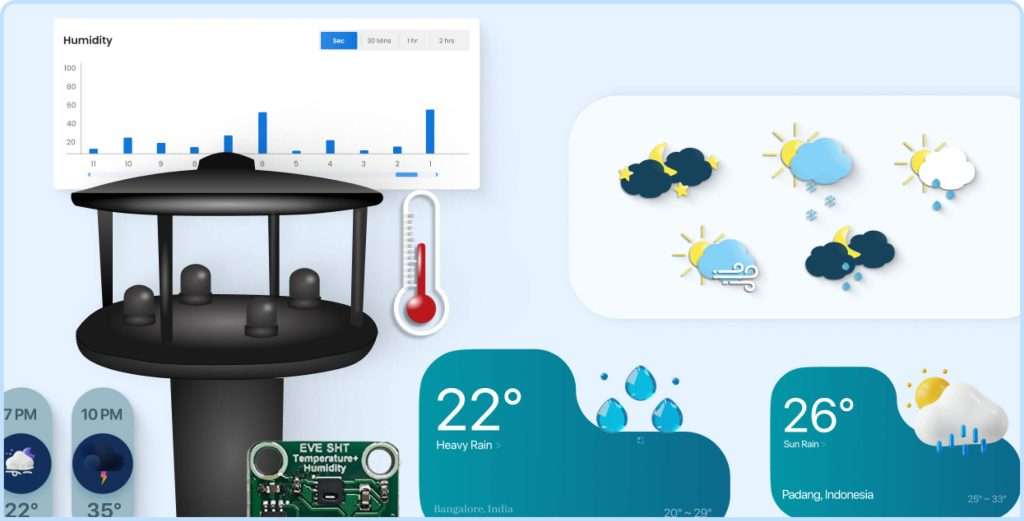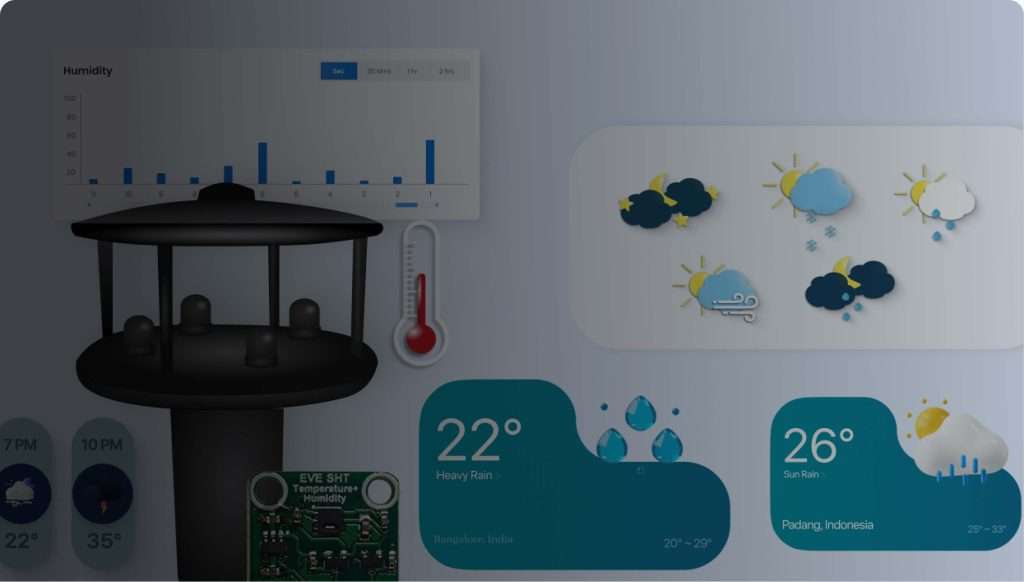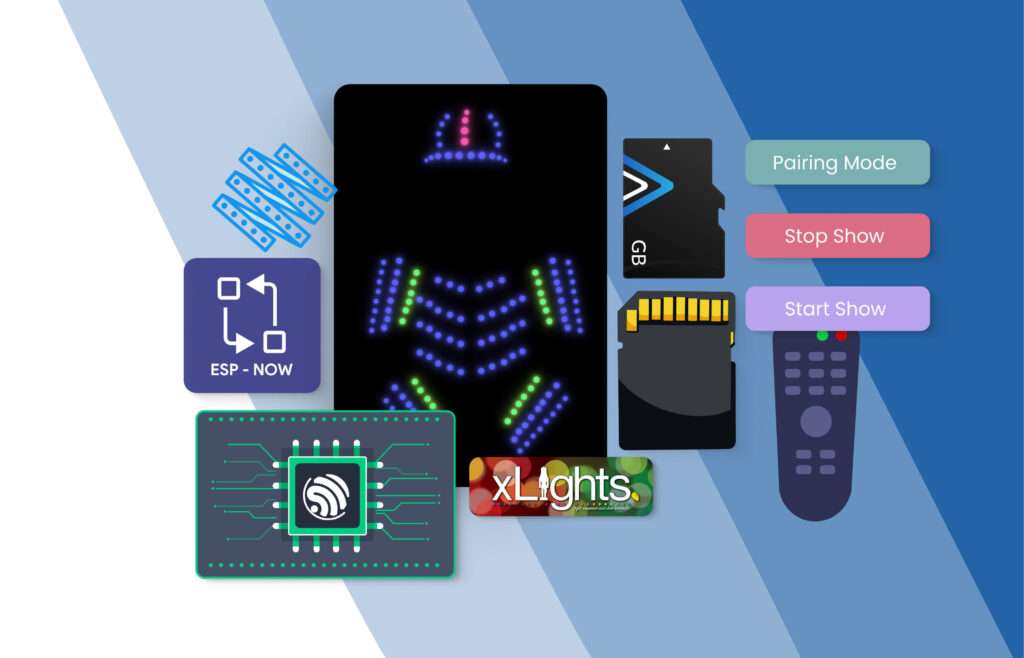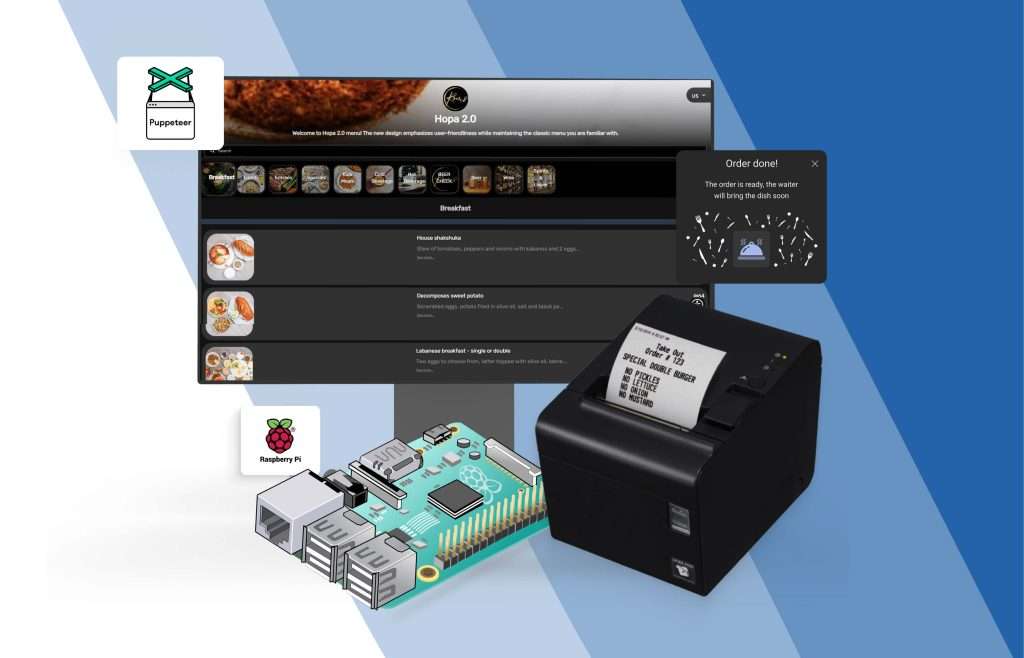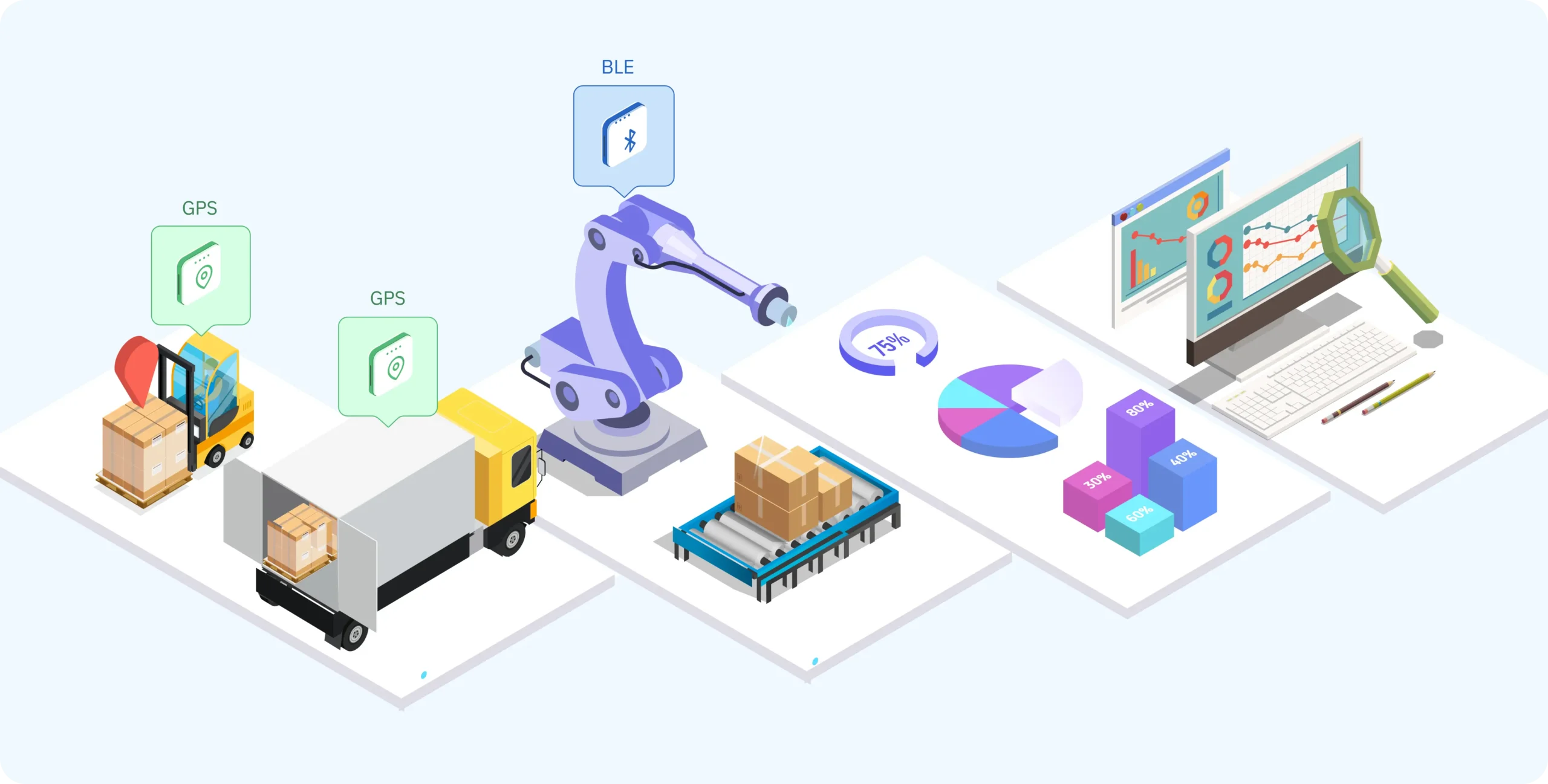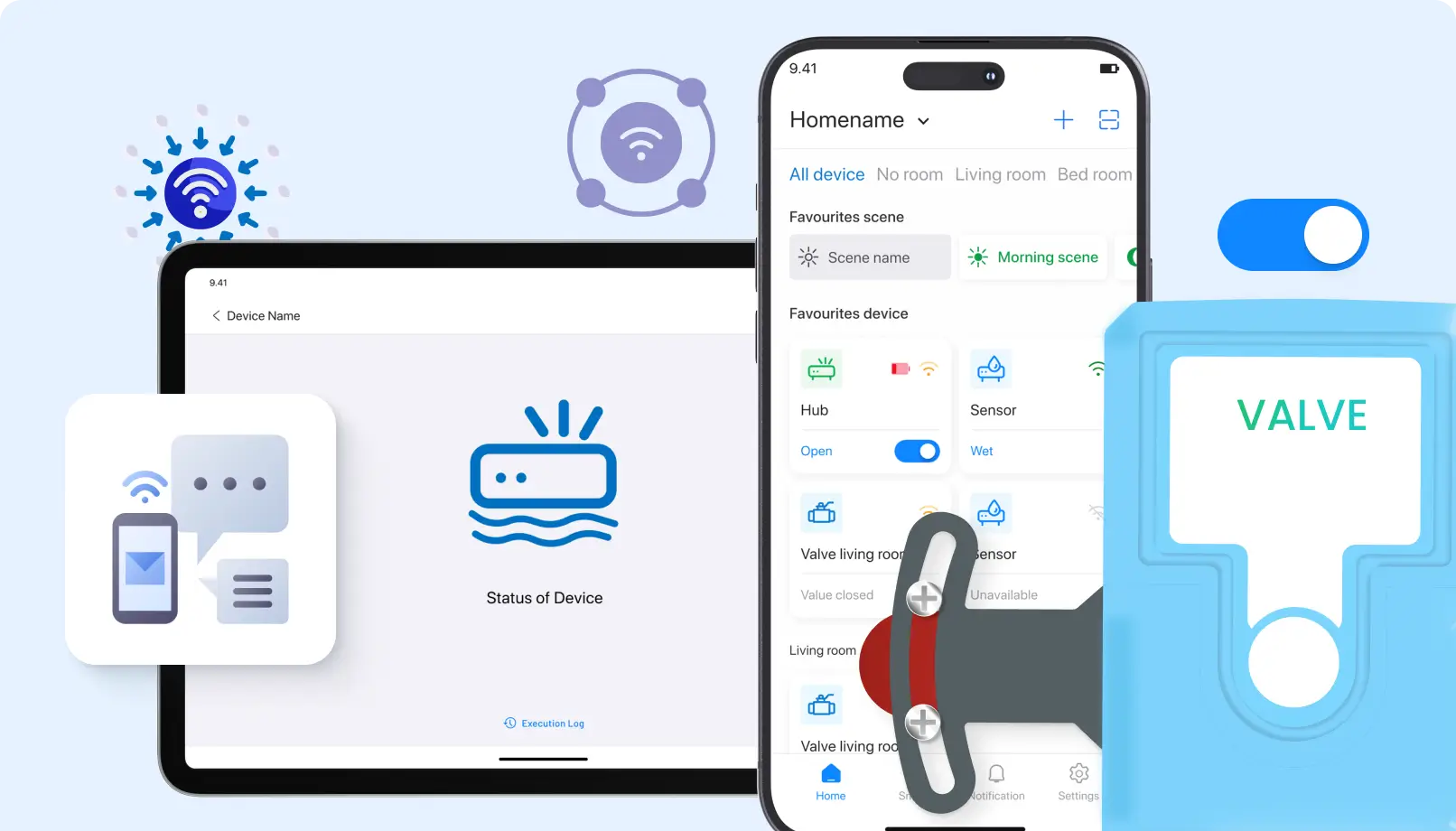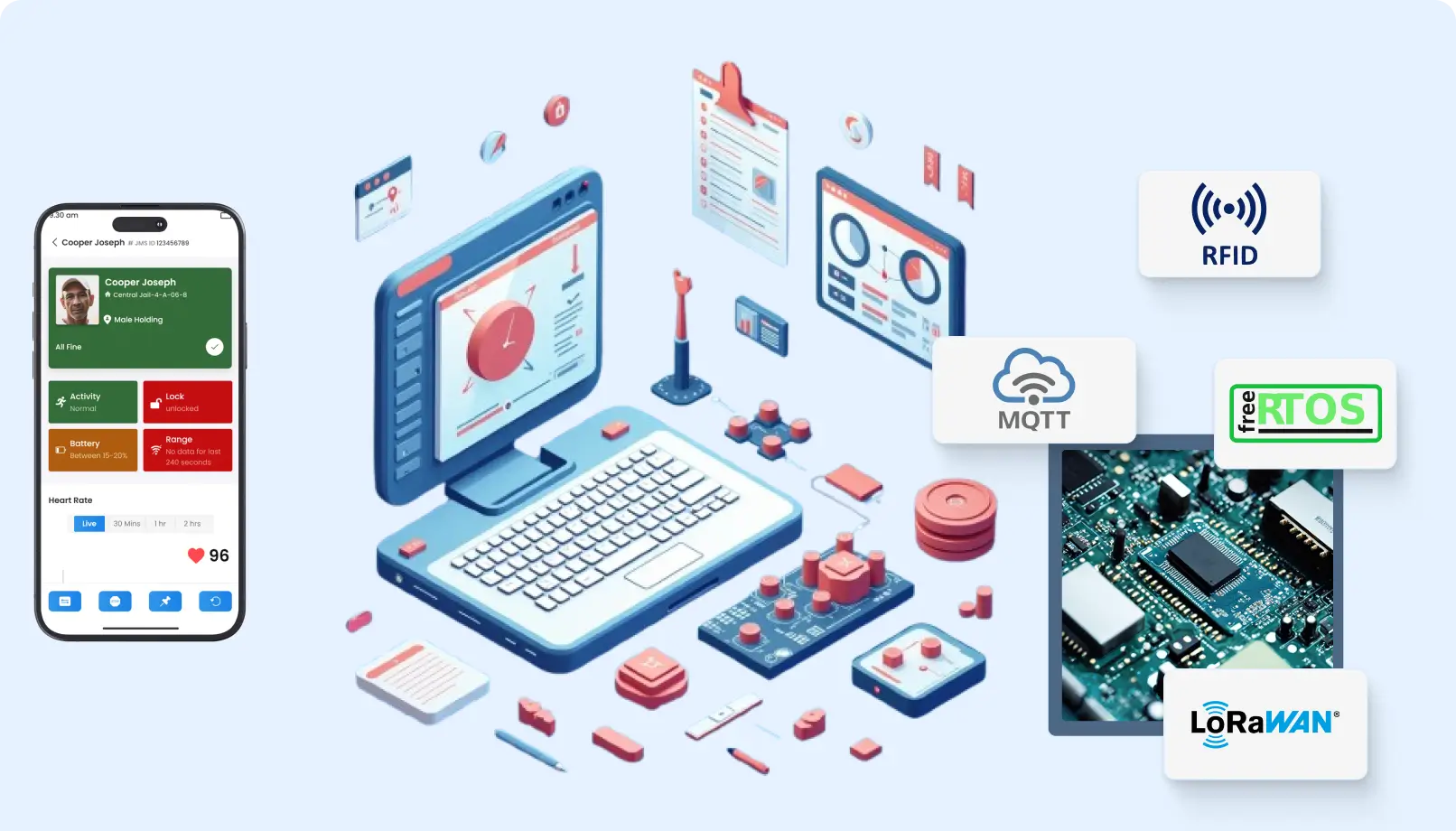1. Real-Time Data Acquisition
Use Case: Critical Aviation Forecasting
Airports and aviation authorities rely majorly on real-time information about weather systems for safe aircraft flying. Sensors track a wide range of parameters, such as wind speed, temperature, humidity, and atmospheric pressure, which may assist in flight planning and operational work.
For example, a huge airport utilizes weather sensors located at several points across its runways and control towers to track wind speed, temperature fluctuations, and sudden changes in atmospheric pressure. This would be useful for air traffic controllers to guide the pilots through takeoff and landing processes to ensure safety in rapidly changing conditions such as crosswinds or fog.
Use Case: Enhanced Sports Event Management
The organizers of outdoor sports events need real-time weather monitoring to make decisions about the event scheduling and the safety of the players. Real-time data allows them to predict sudden changes in the weather, thereby making it possible to hold the event safely or postpone it in case adverse weather conditions develop.
Example: A tennis tournament employs IoT weather stations that monitor real-time data related to heat, humidity, and wind speed. Whenever sensors sense a heatwave, the organizers change the schedule to protect players and spectators from exhaustion due to heat by rescheduling a match or even providing cooling measures.
2. Remote Monitoring
Use Case: Environmental Monitoring in Remote Regions
Such IoT weather stations can be placed in various places-remote Arctic or mountainous regions, where physical access may not be easy, but can monitor conditions like snowfall, temperature, or wind speed from remote distance. Such data sources are extremely important for researchers on climate patterns and environmental changes.
Example: Mount IoT-based sensors at a Himalayan climate research station to measure rates of snowfall and temperature changes. These send data via a remote channel to scientists thousands of miles away so that glacial melting and snowfall accumulation could be monitored continuously-an important record for ascertaining how high-altitude environments change because of climate variability.
Use Case: Remote Monitoring for Agriculture
The weather sensors monitor such conditions as rainfall, soil moisture, and temperature in remote agricultural regions by farmers. They allow them to manage their crops and irrigate them even though they do not have a permanent presence in the field.
Example: A farmer in a rural area of Australia installs weather sensors across his farm to track soil moisture and local temperature. Information from such sensors is transmitted to the farmer’s cell phone, so that he could remotely change irrigation schemes for optimal use of water conservancy even though he is hundreds of kilometers away from the farm.
3. Early Warning Systems
Use Case: Flood Prevention in Urban Areas
The IoT weather sensors track the flash flood-prone cities for an increased level of water, intense rain, and pressure change in the atmosphere. Early warnings for such predictions are given to the city management, which gets ready to prepare the emergency services and plan for evacuation.
Example: A Southeast Asian city, known for heavy monsoon rains, installs rain gauges and flood sensors at the low-lying areas. Upon their detection of intense precipitation and water rising in the rivers, the system automatically generates alarm alerts coming through a mobile application to city officials and the residents of the said locality. With such an early warning system, evacuation can be made on time and flood damage minimized.
Use Case: Hurricane Prediction and Preparedness
Coastal regions rely on the use of IoT devices that track the behaviors of hurricanes including storm patterns, wind strengths, and pressure drops, which indicate that it is developing into a hurricane. This information enables governments and communities to be better prepared to deal with storms much before they arrive.
For example, the small town in Florida uses weather buoys with sensors that could detect ocean conditions such as wind speed, sea surface temperature and atmospheric pressure. When the system identifies hurricane-friendly conditions, it could send early warnings to nearby emergency services, where they could order evacuations and open up shelters.
4. Air Quality Monitoring
Use Case: Urban Air Quality Management
Air quality sensors detect the concentration of pollutants, including particulate matter (PM2.5, PM10), carbon dioxide (CO2), and nitrogen dioxide (NO2) in such cities, which are increasing levels of pollutants. Real-time data from the sensors may be fed to city planners and policymakers to manage air quality and enforce pollution-control measures.
Example: The Chinese city has an area-wide air quality sensor to monitor the PM2.5 levels. The city office stops traffic, issues car-free days, and increases public transport on a day when PM2.5, emission from vehicles, spikes and asks people to stay indoors.
Use Case: Wildfire Public Health Protection
One of the most critical observations of smoke spread and unhealthy pollutants during the season of wildfire involves air quality sensors. Data from these sensors provide information for public health advisories and help individuals take appropriate measures for their protection.
Example: Whenever it is wildfire season in California, there are deployed sensors throughout the state to collect information on dangerous smoke particles. This data will then be compiled into a public health dashboard that indicates the latest updates on air quality so people may close windows, stay indoors, and wear masks when pollutant levels reach danger points.
5. Agricultural Support
Use Case: Precision Irrigation for Water Conservation
Weather sensors in agriculture assist in monitoring the moisture and conditions within the soil so they can provide advice on irrigation with more accuracy for crop yield while saving water.
Example: California vineyard connects Internet of Things soil moisture sensors to a local weather station, with applications for temperature and humidity sensing. The system allows it to automatically adjust irrigation schedules in real-time while preventing the waste of water unnecessary to provide optimal hydration that the vines need to improve its grape quality and promote sustainability through reduction of water use.
Use Case: Prevention of Frosts in Farming
This means temperature sensors may alert the farmer to sudden drops in temperature especially when frost-prone seasons are nigh to cripple crops. Sensors thus create an early warning mechanism that ensures they can get enough time to activate heating systems and cover crops to help prevent damage.
Example: A citrus farm in Florida uses temperature sensors to detect frost conditions at certain times of the winter season. When sensors detect that the temperature is rapidly falling, an automated heating system at the farm kicks in, and citrus trees do not get damaged by frost-bites, thus preventing crop loss and financial erosion.
6. Climate Research
Use Case: Monitoring Climate Change in Polar Regions
IoT weather sensors are set in polar regions, which help to develop ice thickness, atmospheric pressure, and temperature data. These data will be used in informing the changes happening because of climate change upon these sensitive environments.
Example: A research team studying the ice shelf of Antarctica uses IoT-empowered weather stations to track melting rates of ice along with temperature variation. Data from these sensors over several years helps scientists analyze long-term trends in polar ice melting, which becomes indispensable for understanding the rise in sea levels and global impacts associated with climate change.
Use Case: Long-term Environmental Studies
Sensors mounted on various types of ecosystems collect weather over long times. It informs scientists concerning changes in weather patterns and nature ecosystems, which contributes to understanding climate changes attributed to global warming.
For instance, the Amazon rainforest is decorated with various weather sensors distributed by an institution carrying out studies on the environment. These sensors monitor temperature, humidity, and rainfall patterns around the region and have been able to capture large-scale changes in climate conditions over the past decade. Scientists are thus able to measure and make inferences on deeper impacts of deforestation and climate change on the Amazon rainforest ecosystem.
Conclusion
Sensor technology in weather monitoring has turned the way we understand and interrelate to the environment. From real-time collection of data for precise forecasting to remote monitoring in inaccessible areas, IoT-enabled weather sensors give some of the most important information that can aid industries, governments, and individuals in taking informed decisions. Whether it’s to better the livelihoods of agricultural output, keep the public safe, advance climate research, or design cities and environments, the applications of sensor technology continue to multiply the ways of more accurate, accessible, and responsive weather monitoring in responding to global challenges.
